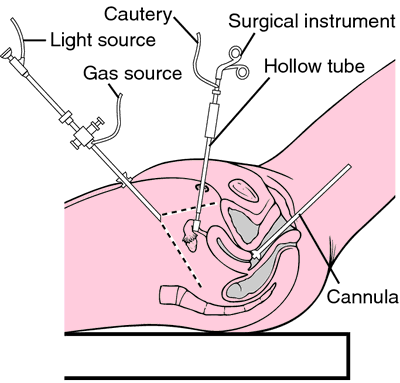Endometriosis is a condition where endometrial tissue grows outside the uterus, causing pockets of tissue to build up in and around the fallopian tubes, ovaries, bladder and other parts of the pelvic area. Mild endometriosis can have a direct affect on a woman’s ability to get pregnant due to the increased chance of adhesion growth in the ovaries, hindering the implantation process of the egg in the uterus. According to an article on Endometriosis.org, women with endometriosis may also have a higher risk of miscarriages.
When implantation occurs, the endometrial tissue secretes important hormones into the uterus in order to prepare it for pregnancy. When the endometrial tissue has built up outside the uterus, the secretions have nowhere to go, and often are passed through the abdominal cavity instead of the uterus. These misplaced hormones will cause the body to become confused, and allow the woman to continue to ovulate even though pregnancy has already occurred. When ovulation continues, the body will go through its normal process of wanting to shed its old lining (including the fertilized egg) causing a very early miscarriage.
Despite potential complications, many women with endometriosis can conceive and have successful pregnancies. Conception can happen without intervention for about half of the women with endometriosis. However, if the symptoms are severe there are a number of treatments that will increase a woman's chances of conception.
The most common treatment is to have surgery to remove the built up lining within the pelvic area. Removal of an ovarian endometrioma will allow the egg to be released into the fallopian tube and travel down to the uterus for fertilization. This type of surgery may also help decrease the pain levels some women experience during ovulation, and help regulate hormone levels within the body. Surgery may also help reproductive specialists to harvest eggs for in vitro fertilization (IVF) if the removal of the extra endometrial tissue is not successful on its own.
Sources:
Endometriosis. Nlm.nih.gov. July 25, 2011. Retrieved Oct. 29, 2011.
http://www.nlm.nih.gov/medlineplus/ency/article/000915.htm
Infertility. Endometriosis. org. Updated April 5, 2011. Retrieved Oct. 29, 2011.
http://endometriosis.org/endometriosis/infertility/
Endometriosis - Answers. About.com. Retrieved Oct. 29, 2011.
http://womenshealth.about.com/cs/endometriosis/a/endotreatdiagsu_3.htm
Endometriosis and Pregnancy. About.com. Retrieved Oct. 29, 2011.
http://womenshealth.about.com/cs/endometriosis/a/endotreatdiagsu_4.htm
Ovarian cysts. Mayoclinic.com. May 21, 2010. Retrieved Oct. 29, 2011.
http://www.mayoclinic.com/health/ovarian-cysts-and-infertility/AN01848





Add a CommentComments
There are no comments yet. Be the first one and get the conversation started!